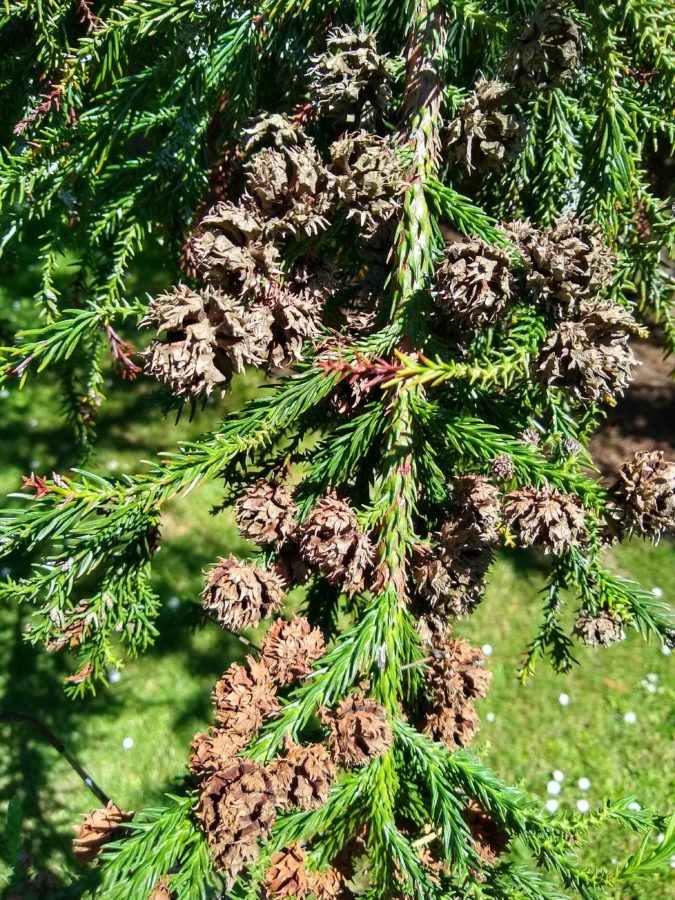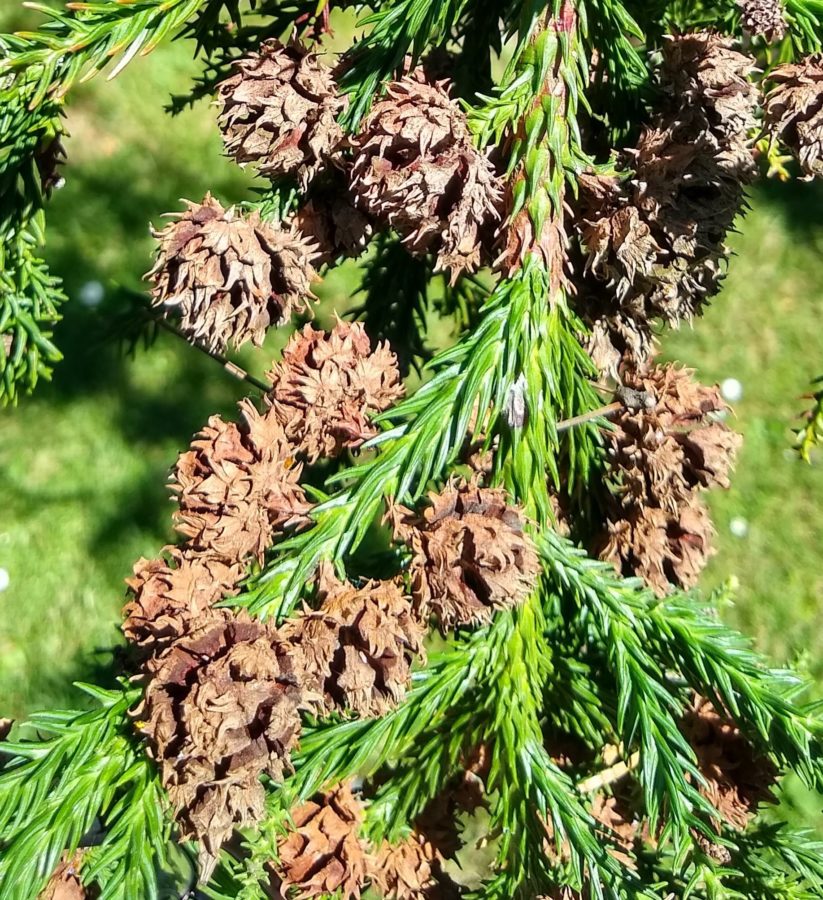Cupressaceae
Cryptomeria japonica
A monotypic genus endemic to Japan. Although it is one of the commonest forestry trees in Japan, the few remaining natural populations are small and very fragmented following centuries of exploitation.
Human Uses
The timber of this species is regarded in Japan as being highly valuable for construction because of its size, workability, and durability. This species is the principal conifer in Japanese forestry (ca 44% of all plantations) and almost all timber now comes from plantations. It has been introduced to China many centuries ago; in Taiwan the Japanese
established extensive plantations replacing natural forest. The wood is rather coarse grained, with reddish heartwood and light yellowish sapwood, and a typical coniferous fragrance due to volatile terpines. It is used in house construction, panelling, flooring, carpentry, joinery, and furniture making. The fibrous bark was traditionally used for roofs of houses but is now more often processed as a general fibre or composted. There are several hundred cultivars known of this species, in Japan and in Europe and North America, and the species as well as many of these cultivars is widely used in gardens and parks. Outside of its native habitat, Cryptomeria can be invasive and may readily regenerate from seed and by layering.
References and further reading
- Hirayama, K. & M. Sakimoto (2008) Clonal structure and diversity of Cryptomeria japonica along a slope in a cool-temperate, old-growth mixed forest in the snowy region of Japan. Canadian Journal of Forest Research 38(11):2804-2813.
- Kitagawa, J., Y. Morita, M. Makohonienko, K. Gotanda, K. Yamada, H. Yonenobu, I. Kitaba & Y. Yasuda (2016) Understanding the human impact on Akita-sugi cedar (Cryptomeria japonica) forest in the late Holocene through pollen analysis of annually laminated sediments from Ichi-no-Megata, Akita, Japan. Vegetation History and Archaeobotany 25:525-540.
- Matsumoto, Y., H. Shigenaga, S. Miura, J. Nagakura and H. Taoda. (2006) Mapping of Japanese Cedar (Cryptomeria japonica) Forests Vulnerable to Global Warming in Japan. Global Environmental Research 10(2): 181-188.
- Takahashi, T., N. Tani, H. Taira and Y. Tsumura. (2005) Microsatellite markers reveal high allelic variation in natural populations of Cryptomeria japonica near refugial areas of the last glacial period. Jounal of Plant Research 118(2): 918-940.
- Takashima, A., A. Kume, S. Yoshida, N. Mizoue & T. Murakami (2017) Historical logging and current successional status of old-growth Cryptomeria japonica forest on Yakushima Island. Journal of Forest Research:dx.doi.org/10.1080/13416979.2016.1273085.
- Thomas, P., Katsuki, T. & Farjon, A. (2013) Cryptomeria japonica. The IUCN Red List of Threatened Species 2013: e.T39149A2886821. http://dx.doi.org/10.2305/IUCN.UK.2013-1.RLTS.T39149A2886821.en. Downloaded on 06 July 2017



